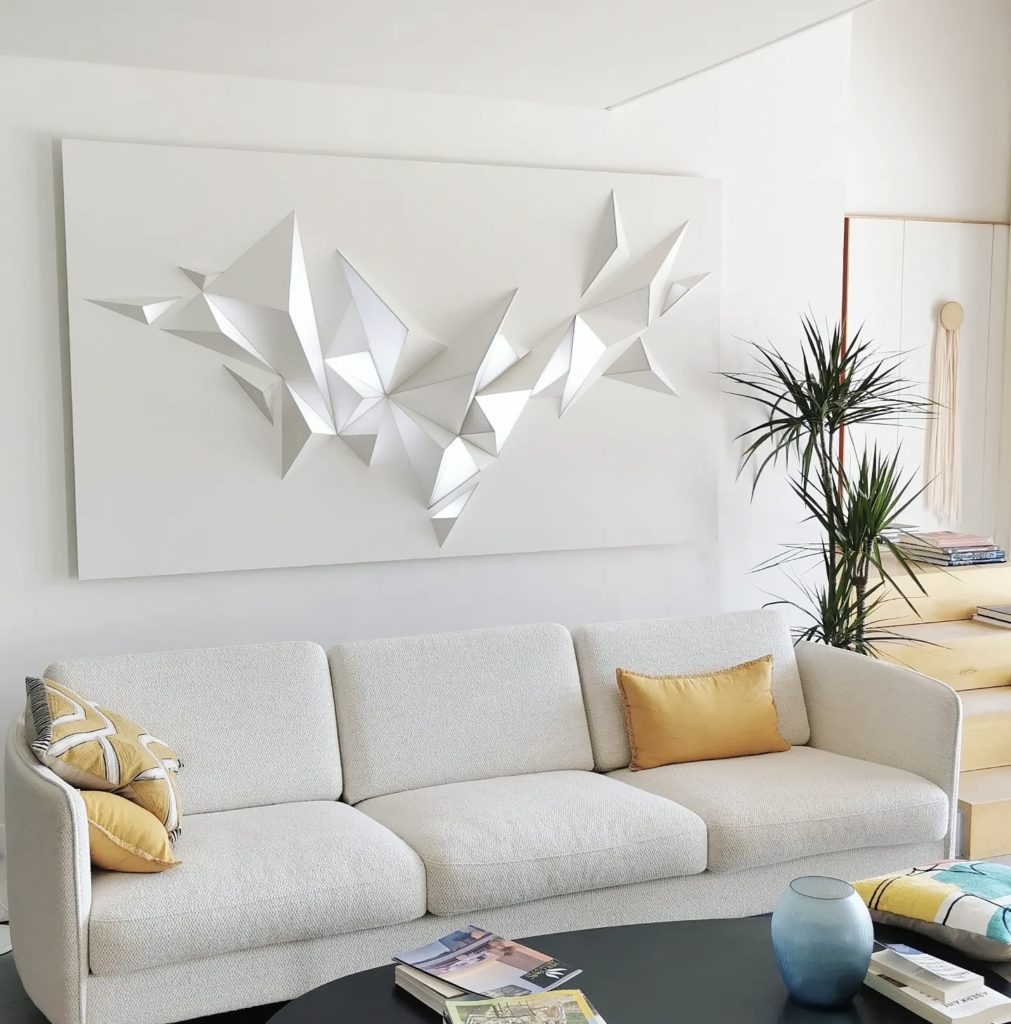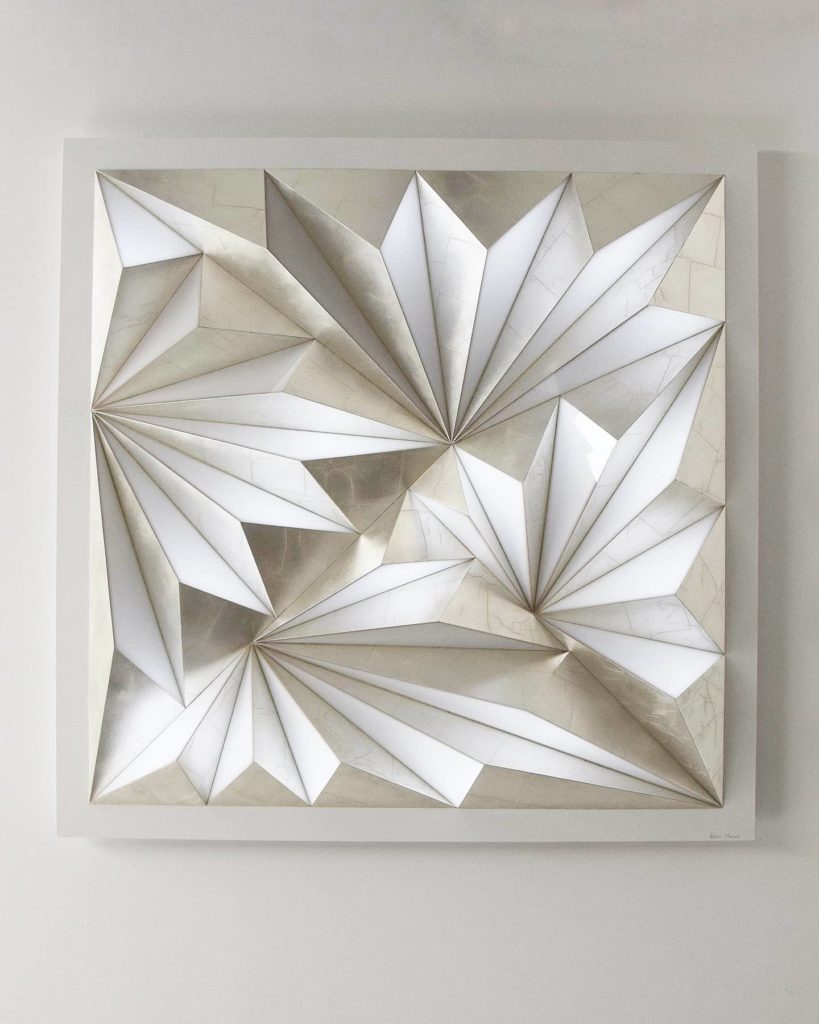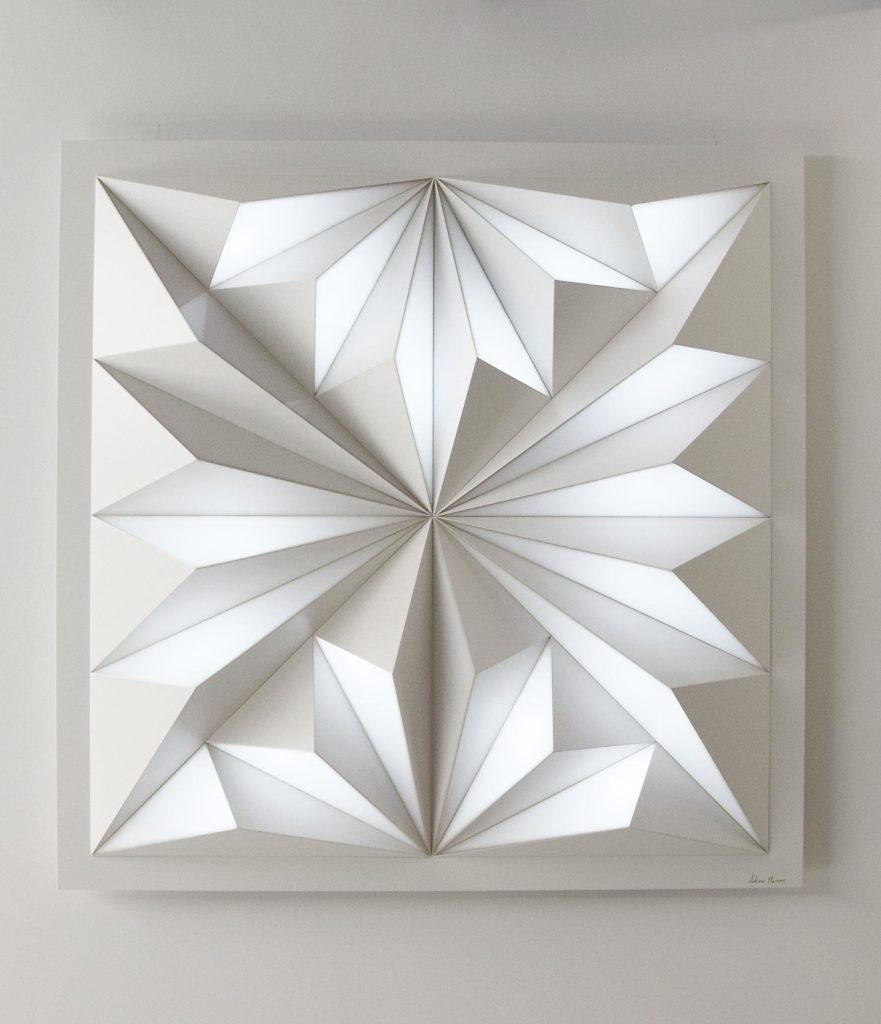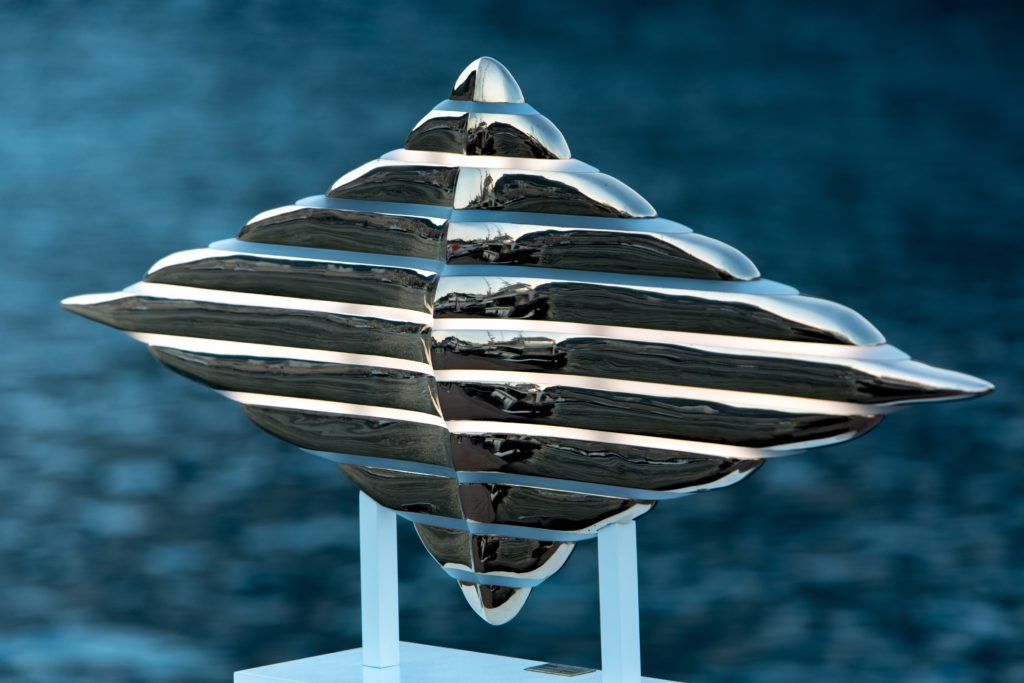Share the post "Therapeutic sculptures between words and messages encoded in a luminous binary language. Interview with Adrien Marcos"
Adrien Marcos, artist from France. Photo © Courtesy of the artist
Tell us what you do and your beginnings.
At the end of the year, I have been working as an artist for 10 years and creating therapeutic light sculptures. I have always been creative, from a very young age as far back as I can remember, I carried out all kinds of crafts, constructions, drawings… However, art schools never attracted me and I preferred to pursue studies in mechanics and electronics.
At the same time, I continued to make more and more accomplished creations, gradually using the knowledge of electronics and mechanics that I learned in class. And then in the middle of my electromechanical engineering school in Paris, I decided to stop my studies and devote myself fully to what I was passionate about, having enough keys in hand to achieve everything I had in my head. It was therefore under the roofs of Paris, after a year of research and prototyping in the workshop of an artist friend, that my first light work was born. Since then, I have never stopped designing new ones, always looking for improvement.

What does your work aim to say?
The idea, or at least what called myself, was to create works that could communicate with the viewer. Not just intellectually or emotionally through representations or colors, but physically, in a concrete way. Then, I had the idea of giving them a voice, of allowing them to transmit information to us through a language of light. This is why we talk about Therapeutic works.
I created an electronic card that converts words like LOVE into light frequencies. Each letter is first converted into binary, therefore into 1 and 0, and then turned on and off at the location of the lights in the different volumes. This produces a frequency carrying this information, manifesting as a soothing dance of light. The idea is that in addition to being aesthetically pleasing, my works can bring well-being to the people who look at them.
This luminous program being common to each work, I also seek to achieve a form of excellence in the execution and realization of the material. I think it is very important to bring the most care and excellence to what we do. Ranging from simple daily tasks to larger personal or professional projects. I think that it is by going to the end of things and with passion that we prevent our civilization from sinking into chaos. This is all what my art means.



Where do you find inspiration for your art?
Certainly, as with many artists, it is the observation of the world around us that is inspiring. The world in all its forms, nature and its perfect natural patterns, humans and their architecture, the universe with its infinite vibrations… This is all that we find in my works, they are the echo of it.
Could you give us some insight into your creative process?
It is a process that includes many steps. It always starts with a sketch on paper, most of the time it’s a sketch I will come back to see and modify days or weeks later, to give myself time to absorb it and mature it. When I like a sketch on paper enough, I then move on to its creation in D3 on construction software.
It often happens that I still modify dimensions and integrate precise proportions such as the golden ratio. The 3D design allows me to obtain a realistic visual of the work to validate its design, but also and above all to obtain dimensions essential for physical manufacturing.
Then work can begin in the workshop, with cutting the wood and plexiglas for the pyramid structures, assembly, gluing, and sanding. Each pyramid then receives a finish which can be spray painting gilding or silvering. When the pyramids are finished, it remains to fix them on a support and integrate the electronics. I carry out the entire manufacturing process myself. Each work represents approximately 100 hours of work.
Continue on MuseumWeek Magazine.
